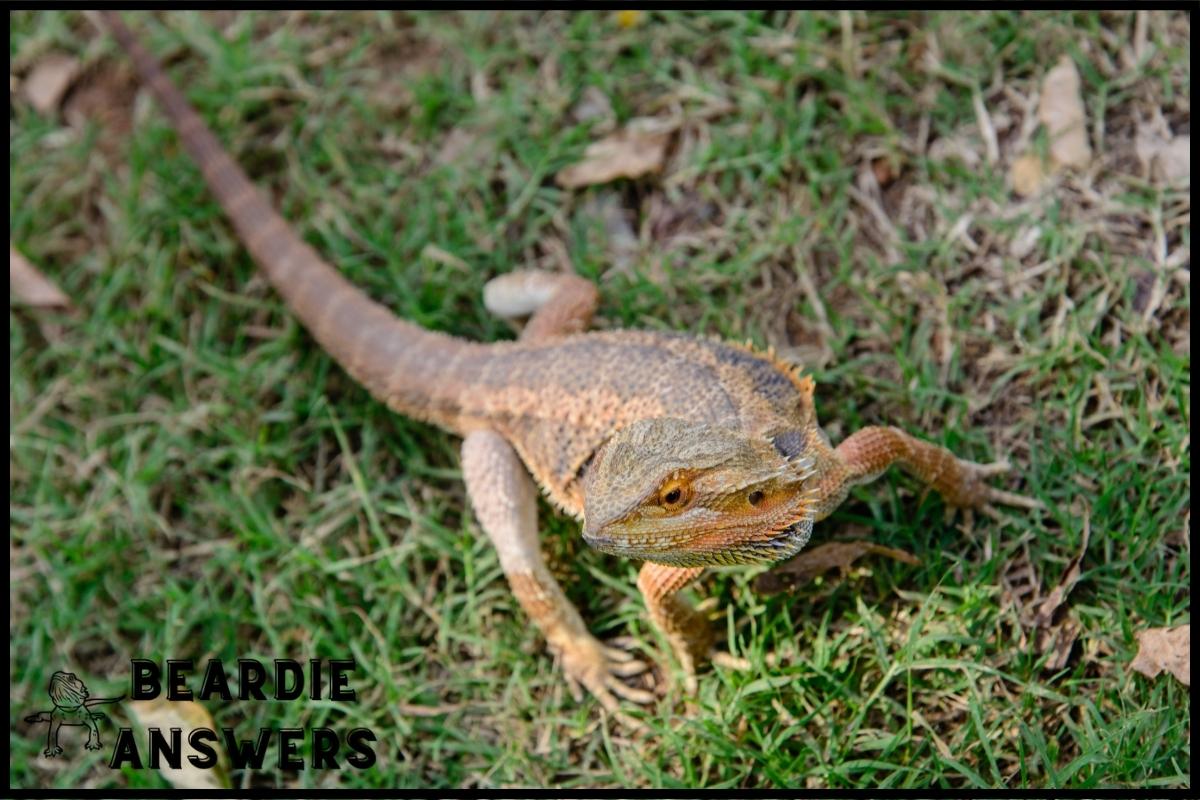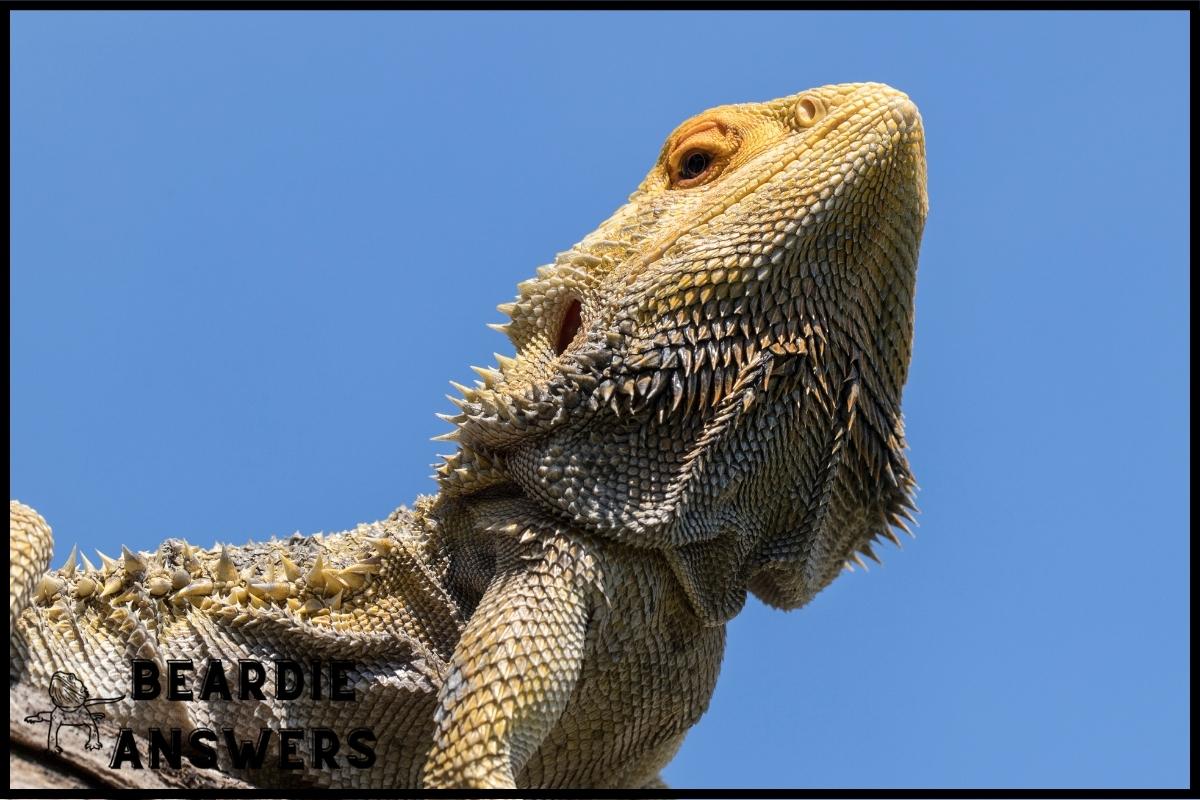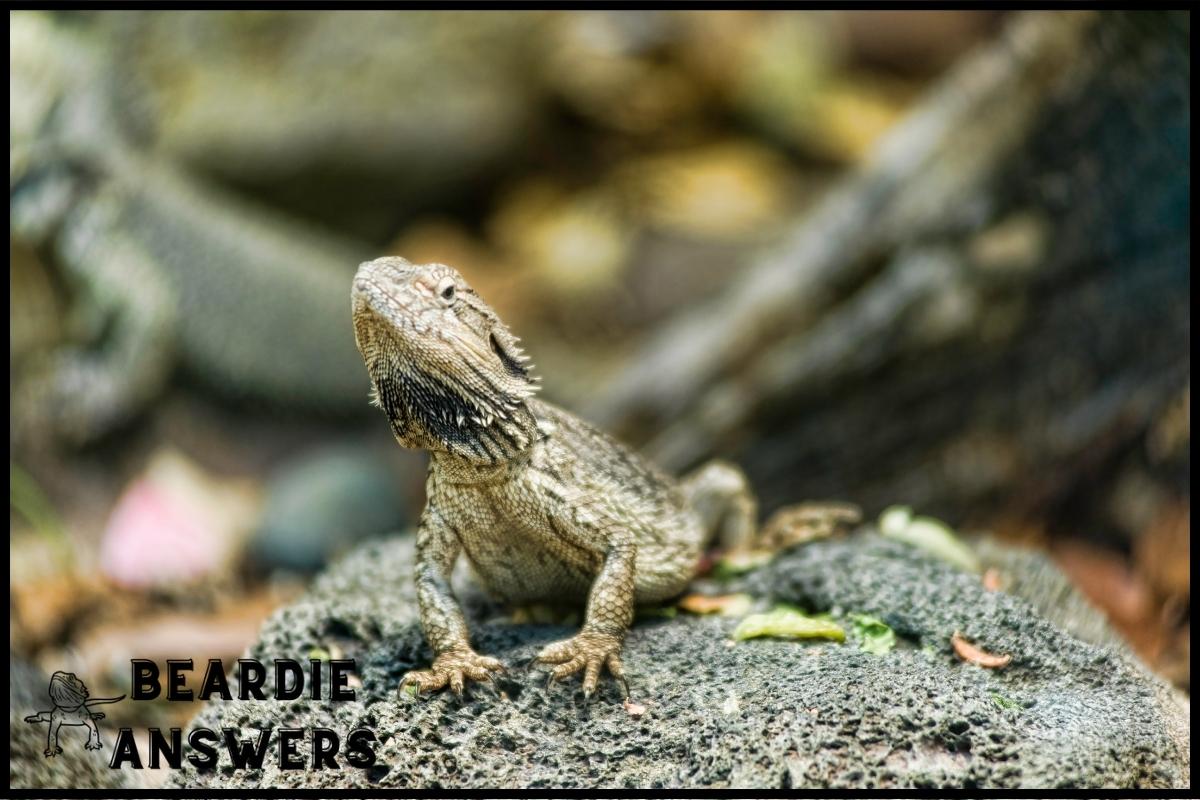The size of the tank or enclosure for a bearded dragon is crucial for their overall health and well-being. A minimum of 40-gallon tank is recommended for juvenile bearded dragons, while adult bearded dragons require a minimum of 75 gallons. The enclosure should be large enough to allow the reptile to move around comfortably, bask under the heat lamp, and have ample hiding spots.
What You'll Learn
The Basics Of Dragon Enclosures
They say that ‘a house is not a home without a dragon,’ and this could not be more true when it comes to keeping bearded dragons.
When choosing the right enclosure for your new scaly friend, there are many things to consider such as substrate options, temperature control, humidity levels, and size of the tank.
The most important factor in setting up an appropriate habitat for a bearded dragon is the proper sized enclosure. A suitable enclosure for juvenile bearded dragons should be at least 40 gallons while adults should have an enclosure of 75 gallons or larger.
The next step in creating a safe environment for your beardie would be selecting the ideal type of substrate. Consider using something like sand or pebbles as these provide better insulation than other substrates such as tile which can make their environment too cold or hot depending on where you live.
Finally, having the correct level of humidity within the tank is key; you’ll want it to stay between 30-50%. Having all three elements–size, substrate, and humidity–will ensure that your pet has everything they need to feel comfortable and secure in their naturalistic habitat!
Types Of Enclosures
When it comes to keeping a bearded dragon, there are many different types of enclosures that can be used.
Glass tanks or terrariums are the most popular option for housing bearded dragons due to their accessibility and affordability. However, these cages need to have adequate ventilation in order for your pet to remain healthy and comfortable. Many accessories such as basking rocks and platforms can also be added to enhance the environment of your pet’s enclosure.
Plastic tubs or plastic storage boxes make great alternatives when purchasing an enclosure for your bearded dragon since they are lightweight, easy to clean, and provide ample space for your pet. The downside is that these containers lack the necessary air circulation needed for proper temperature regulation within the enclosure which may require additional equipment such as fans or heating pads outside of the cage.
No matter what type of enclosure you decide on, it must meet certain size requirements depending on whether you own a juvenile or adult bearded dragon.
It’s important to consider this before investing in any new supplies so you can ensure that you create a safe and inviting home for your beloved reptile companion. With careful selection of materials and thoughtful consideration of size requirements, setting up an appropriate habitat will help keep your beardie happy and healthy.
Size Requirements For Juveniles
When it comes to size requirements for juvenile bearded dragons, the enclosure needs to be at least 40 gallons.
It’s important when setting up a habitat for any pet that you think about enrichment opportunities and substrate choices. When creating an environment for your bearded dragon, make sure you have plenty of places for them to climb or hide. This could mean providing things like driftwood, rocks, and plants so they can explore their home. Substrates such as sand should be avoided due to potential health risks associated with ingestion.
Instead, look into substrates made from crushed walnut shells which are entirely safe if ingested. Bearded dragons also need access to both UVB and UVA lights in order to support proper growth and development of their bones and skin. A temperature gradient should also be established throughout the enclosure so that they have areas where they can warm on one end and cool off on the other.
These pieces all contribute towards forming an appropriate habitat for a juvenile bearded dragon. With adequate space, enrichment opportunities, light sources, temperatures zones, and safer substrates these reptiles will thrive in captivity – opening the door to many years of enjoyment between you and your new scaly friend!
Moving forward, we’ll take a closer look at what size is necessary for adult bearded dragons…
Size Requirements For Adults
As we have discussed the size requirements for juvenile and adult bearded dragons, it is now time to delve deeper into their habitat design. When setting up a suitable home for your beloved reptile, there are many things that need to be taken into consideration in order to provide the best environment possible. Here are the main elements:
- Substrate choices: It is important to choose an appropriate substrate for your dragon’s tank. Substrates such as sand and gravel can cause impaction if ingested so it is recommended to use newspaper or paper towels instead. Additionally, you should also avoid using any loose substrates like wood chips/shavings due to potential health risks from dust particles and mites.
- Habitat design: Bearded dragons require plenty of room to move around and explore its environment. This means adding branches at different heights which will allow them exercise by climbing, basking areas where they can absorb heat from UVB lighting and hide boxes for when they want privacy or feel threatened by something in their enclosure. You should make sure there aren’t any sharp edges on these items as well.
These two factors are just some of the components needed when creating a proper habitat for your pet bearded dragon. With careful planning and research, you can ensure your scaly friend lives a long, healthy life with all the essential needs met inside its cage!
Now let’s shift our focus onto temperature and lighting – two other key points necessary for bearded dragons’ wellbeing…
Temperature And Lighting
Bearded dragons need a hot and bright environment to stay healthy. To achieve this, their enclosure should be equipped with heating lamps that can maintain an optimal temperature of 95°F during the day and 75-80°F at night.
It is also important for bearded dragons to have access to UV rays from full-spectrum bulbs or special reptile lighting fixtures. These provide beneficial vitamin D3 which helps calcium absorption in the beardie’s body.
In addition, it’s important to note that lights should be on for 12 hours per day and off for 12 hours per day so that your dragon has time for restful sleep each night. Allowing too much light or not enough light could cause health issues such as metabolic bone disease down the road.
Overall, setting up the right temperatures and providing adequate lighting are essential components of ensuring good husbandry practices when keeping a bearded dragon. With proper care, they can live happily and healthily in captivity.
Now onto other considerations…
Other Considerations
When it comes to setting up the perfect environment for a bearded dragon, there are several other considerations that must be taken into account. From substrate choices and lighting options, to ventilation and heating needs – each factor plays an important role in providing your pet with the best possible habitat.
The type of substrate you use is one important consideration when creating a suitable tank for your bearded dragon. A variety of substrates can be used, such as:
Sand-based mixes
- Calci-Sand
- Repti-Sand
Non-sand based mixes
- Coconut fiber bedding
- Paper towels
Each has its own advantages and disadvantages so make sure to do plenty of research before making your decision. Be aware that some sand-based substrates may cause impaction if ingested which can lead to serious health issues so consult with your vet or reptile specialist first.
It’s also essential to make sure you provide adequate ventilation in your beardie’s enclosure. You should aim for at least two air vents per side of the tank, spaced evenly apart from each other. This will ensure enough fresh air circulates through the enclosure allowing carbon dioxide levels to remain low and oxygen high.
As well as helping maintain good air quality, having proper ventilation will help regulate temperature by preventing hot spots from forming inside the tank too.
Providing a safe and comfortable home for your beloved lizard friend requires thoughtful planning but ultimately leads to many years of happy companionship!
Conclusion
Investigating the truth of the theory that a suitable enclosure for bearded dragons should be at least 40 gallons for juveniles and 75 gallons for adults is essential.
To ensure their health and happiness, these space requirements must be met.
It’s clear that providing enough room to move around comfortably is key in giving your dragon the best home possible.
Providing ample lighting, temperature control and hiding spots are also important considerations when creating an environment for your pet reptile.
Doing research before purchasing a dragon cage will help you provide them with a safe and happy habitat.

Hi! My name is Bryan, I am the “one behind the words” here are BeardieAnswers.com. I believe that providing quality care and nutrition is the best way to ensure the health of your pet. Every beardie is special and deserves the best care and attention. If you have questions about your bearded dragon, please don’t hesitate to ask! View My Full Author Page




